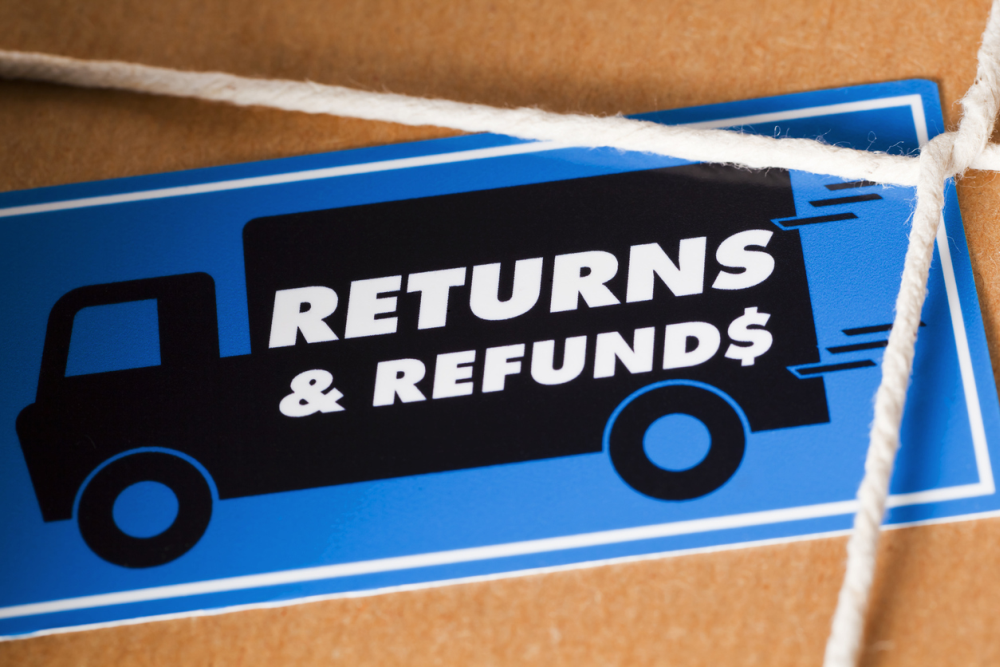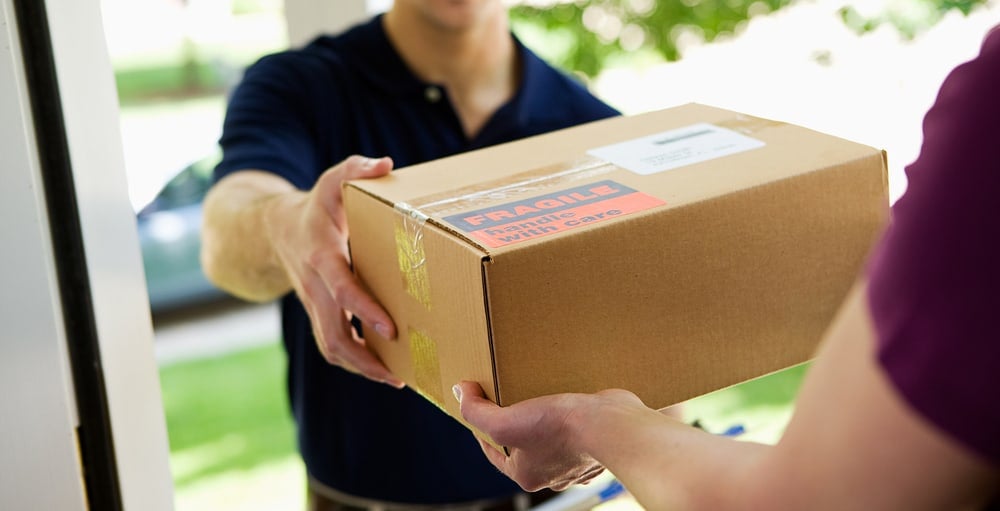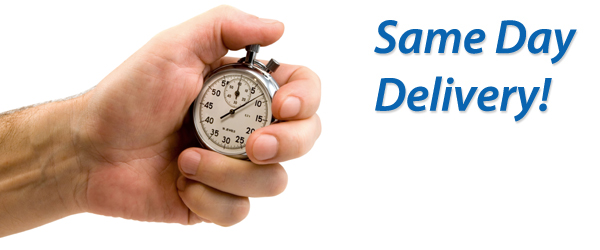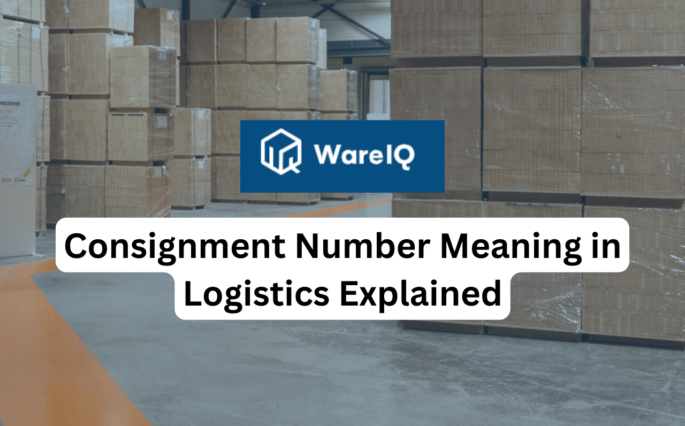What Is eCommerce Shipping? A Complete 2025-26 Guide to Processes, Benefits & Best Practices

Transportation of a product procured from an online retailer by a customer to their door is known as eCommerce Shipping.
The above is a simple definition. However, today’s eCommerce shipping & delivery involves highly complex processes – ordering, picking and packing, labeling, shipping, tracking, communication, and returns – that work seamlessly to deliver the product at the right place, time, and price.
- What is eCommerce Shipping?
- What are the Processes Involved in eCommerce Shipping & Delivery?
- What are the Various Costs Associated with Shipping for eCommerce?
- 10 Best Practices in eCommerce Shipping for Competitive Advantage in 2025
- What are the Benefits of eCommerce Shipping?
- How to Choose an eCommerce Shipping Service for Your Business in 2025?
- Conclusion
- Ecommerce Shipping FAQs (Frequently Asked Questions)
What is eCommerce Shipping?
eCommerce shipping is essentially the transportation of an ordered product from the warehouse or fulfillment center to the customer’s location, where delivery personnel will handle the last-mile phase of the order fulfillment process to deliver it to the customer. Shipping for eCommerce is a critical function of online retail as it is a crucial differentiator in satisfying and retaining a customer. Any business strategy of an eCommerce set-up must consider the capability to ensure the timely delivery of a purchased product safely at a reasonable cost. Developing and implementing the right shipping process with the right partners ensures a controlled and inexpensive delivery operation.
The goal of an e Commerce shipping plan is to have an inexpensive and efficient process that delivers the product safely and on time, every time.
The advent of eCommerce has given rise to fast deliveries of products that one shops for from the comfort of their home. Thus, e Commerce shipping has become a vital aspect of a successful eCommerce business, as it offers both convenience and quick deliveries to customers.
Hence, an eCommerce business that delivers a product purchased online quickly, safely, and on time can sway buyers, increasing sales and retaining loyal customers.
Poorly-planned shipping for the eCommerce process may significantly impact the success of an eCommerce business. A weak shipping process implementation could lead to late deliveries, high shipping costs, unfulfilled or misplaced orders, wrong items shipped, ambiguous return policies, and poor or damaged packaging, thus, impacting the business
WareIQ, an eCommerce fulfillment company, empowers online brands with a superior-tech platform to compete with Amazon like service levels by bringing their average delivery timelines from 5-10 days to 1-2 days.
Suggested Read: What is Shipping Policy?
What are the Processes Involved in eCommerce Shipping & Delivery?
The shipping process in eCommerce involves receiving an order from the customer and all the ecommerce operations after that to successfully deliver it to the customer including confirming the order, locating the relevant products in the warehouse, packaging them, and having them picked up by the shipping company, that will eventually transport it to the same city or town as the customer, from where on-ground delivery partners will pick it up and provide the last-mile delivery to the customer’s exact location. The eCommerce delivery process has three preliminary stages:
Order Receiving
This process begins with the customer placing an order and the seller confirming it. Once it has been confirmed, the products need to be located in the warehouse and confirmed that they are in stock, after which the next phases can commence.
Order Processing
Order processing involves scrutinizing every detail of the order such as making sure that the product is not damaged, checking the number of items or units ordered, checking the accuracy of the delivery address and which route and courier provider would be the fastest, which lays the groundwork for the product to eventually be picked up and transported by the relevant eCommerce shipping company.
Order Fulfillment
This involved the chosen eCommerce shipping company picking up the order after all the final checks and inspections are done to make sure that everything is accurate. Depending on where the customer is located and the proximity of the warehouse or fulfillment center to them, the journey will vary accordingly. Once the order reaches the final destination, it is unloaded and is picked up by the delivery partner, who will eventually handle delivering the order to the customers’ doorstep.
What are the Various Costs Associated with Shipping for eCommerce?
Shipping for eCommerce and logistics costs are complex, and hence an overview of the various expenses associated with eCommerce shipping is given below:
Shipping Costs
Shipping costs are calculated by considering the following:
- Dimensions (lxbxh) – volumetric and gross weight
All shipping carriers assess both volumetric and gross weight for calculating shipping costs. The higher weight of the two is considered, and the rates are calculated accordingly. The gross weight is the package’s actual weight, and the volumetric weight considers the size (l x b x h) of the box to determine the shipping cost.
- The distance to the door
The distance between a package’s origin and destination is considered when calculating shipping costs. Thus, the distance between two different points of origin, and shipping to the same destination, may significantly differ. And so, the longer the shipping distance, the higher the shipping cost.
- Shipping rates structures
Generally, most eCommerce businesses use the following two shipping rate options:
- Flat rate shipping
As the name suggests flat rate shipping is the rate charged is uniform for all orders within a particular range, like weight range (volumetric or gross), order value, delivery distance, or some other categorization.
The disadvantage of this rate structure is that a few orders will be overpriced and others underpriced.
- Real-time rates
With this option, the website displays the actual shipping rates offered by the carrier per the weight of the package, the type of service, and the shopper’s location.
This rate structure charges the correct amount to ship the package to the shopper’s location.
Free Shipping
Most eCommerce businesses increase their sales conversions by offering free shipping. For most consumers shopping online, free shipping is one of the main reasons for completing a purchase on a particular site, thus building customer loyalty.
eCommerce businesses can offer free shipping without losing money, as follows:
- Incorporating shipping costs into product costing.
- Offering free shipping for a minimum purchase value.
- Providing a loyalty program and charging a fee in place of free shipping on all orders.
Suggested Read: What are other ways to reduce shipping costs?
Handling Costs
Handling fees cover everything other than shipping costs. It includes staffing costs for picking and packing items, labeling, loading/unloading the vehicle, and other fulfillment services.
Packaging
Packaging affects shipping costs and customer experience, affecting the brand image. The delivery person and the packaging represent a brand that the customer personally interacts with first-hand.
A well-executed packaging is a vital feature that fosters brand loyalty and customer retention. Conversely, poor or easily damaged packaging leads to a disappointed customer.
- The Right Packaging
There are plenty of packaging options from which one may choose. For example, consider the following to help determine the right packaging option:
- The type of product.
- The shape of the product.
- Weight (volumetric or gross) of the product.
- Is the product over-dimensional?
- Fragility or durability of the product.
- Does the manufacturer supply the product with packaging?
- Whether to go for plain packaging or brand the packaging.
- Custom Packaging
Though custom packaging will be expensive, top-quality packaging can help one’s brand stand out in a competitive environment. Good packaging can create a memorable experience, go viral, and build brand loyalty.
- Sustainable Packaging
With rising eCommerce sales, the waste generated increases. Further, the widespread awareness of the current global environment scenario means that choosing sustainable shipping for eCommerce and packaging solutions will help improve one’s brand image, leading to increased sales.
Shipping Carrier Used
Outsourcing shipping services to a 3PL can help eCommerce businesses expand operationally and negotiate better shipping discounts – lowering overall costs and increasing profits.
A sizeable 3PL network of fulfillment centers can also help eCommerce stores with lower shipping costs and transit times.
Surcharges
Extra costs added to a base rate are surcharges. Any charge exclusive of the regular shipping and handling rates affects the shipping price.
Here are a few surcharges:
- Fuel surcharge: it covers the fluctuating price of oil. It’s a percentage of the shipping cost and changes once a week.
- Over dimension surcharge: means an oversized or bulky non-standard package, which is non-stackable or fragile. Such packages get charged more.
- Surcharges for remote territories: are additional fees carriers charge for delivering packages to remote areas, like beyond city limits or the service area covered by the carrier.
- Dangerous/Hazardous goods: pose a possible risk to other packages carried with it and a delivery person or people near it. Hence such packages incur surcharges.
Returns
eCommerce returns have now grown into a massive issue. The Paypers’ 2021-2022 Report says shoppers return anywhere from 10% to 40% of their eCommerce purchases.
For businesses, returns create challenges in terms of higher logistical costs, increased handling costs, and risk fraud. Also, if the customer returns the product in a damaged condition, the business bears the costs involved in either product refurbishing or disposal.
The returns process can be daunting, inconvenient, and frustratingly slow for shoppers.
10 Best Practices in eCommerce Shipping for Competitive Advantage in 2025
Adopting the best practices for eCommerce shipping is vital for achieving success as this is the differentiator that helps one stand out amongst a host of competitors.
It is also proven that nearly 50 to 60% of online shoppers don’t buy from eCommerce stores offering high shipping costs.
Hence, the strategies listed down below should be followed:
Form a Team
“You are only as strong as your team.” — Dominique Wilkins.
So go ahead and form a team. It is vital that the business generates leads, attracts shoppers to your site, increases conversions, and handles customers’ concerns on shipping efficiently, effectively, and courteously. Accordingly, the following teams will be required sooner or later to grow a successful business:
- The Marketing Team: designs flyers and promotions to attract visitors to the site. The marketing team also carries out communications of such promotions to customers. Communication could be by emails, sms’, blogs, vlogs, social media, and online advertisements.
- The Web Designers and Developers Team: ensure the site is attractive and easy to navigate for potential customers. Like the product listings and offers, the content is explicit and without ambiguity. Customers must also be able to notice the various shipping options and policies available, preferably before checking out.
- The Fulfillment Team: ensures that the orders received are processed quickly. The correct items per the order are picked, packed, shipped accurately, and on time.
- The Customer Service Team: is one of the most critical. A missed or delayed delivery is most aggravating for a customer. They must know how each phase in the product lifecycle affects the customer and how to respond to customer concerns satisfactorily. Concerns could be about a particular ongoing promotion, shipping options or policies, and myriad other issues.
Set the Right Goals
It is essential to set a goal for yourself. You must know where you wish to go and how to get there. One must review one’s path from time to time and then make a course correction if required considering where one wishes to be. Then decide on a strategy that would best help one achieve the desired goal.
Set SMART (Specific, Measurable, Achievable, Relevant, and Time-based) business goals for yourself. Then decide on a strategy. The goals must be clear and concise, which will ensure a profitable shipping strategy with an efficient shipping process and operations.
Here are a few questions that one needs to answer to set goals and strategy:
- What is your target market?
- Do you wish to acquire international customers or stay domestic?
- Do you want to brand yourself, or is it simply a side-hustle?
- Do you want to generate more business and earn profits? How would you do it?
- How can one increase conversions? By offering free shipping or various shipping options or offering competitive price rates, one can increase conversions.
- How can you increase the average order value? Maybe by offering free shipping for minimum order quantity/value or a flat shipping rate to high-value or multiple products bundled together.
- How can you expand the market or increase the target audience? You may do that by partnering with a large 3PL having an extensive network of fulfillment centres. Thus, being able to ship order to new geographies or by introducing newer, fast-moving products.
- How to decrease costs – by exploring possibilities of tying up with major carriers or 3PL, try cheaper packaging options or alternate suppliers offering to ship the product to the customer directly. Furthermore, by showing more affordable products than existing suppliers, increasing efficiency by streamlining the eCommerce operations through process reviews, and thorough education of fulfillment teams, one can decrease costs.
Right Return Policy
The reverse logistics process in eCommerce entails collecting a purchased product from a customer and putting the returned item in stock if undamaged. This process is a cost concern for an eCommerce business and, if mismanaged, will affect its profitability.
Generally, a customer happy with a business’s return policy will shop with the same retailer again. The reverse is also true: shoppers unhappy with the returns process will, in all likelihood, never shop with that business again.
Hence, have a customer-friendly return policy and process returns quickly.
Right Shipping Strategy
Here are the following shipping strategies that one may use per one requirement.
Several eCommerce businesses have successfully used many of the below-mentioned shipping aggregation methods as a strategy:
Real-Time Rates
Display rates in real-time directly from major carriers. Though this strategy will get you the best rates, it cannot be used as a promotional tool because there could be marked variation in rates.
Benefits:
- Cheapest shipping option.
- You can offer to ship to new geographies at lower costs for expanding your business since you can take advantage of scale.
Same-Day Delivery
Same-day delivery requires a highly efficient fulfillment with equally efficient logistics operations. The disadvantage involves deploying plenty of resources, making the entire process costly.
Benefits:
- The fastest delivery time will be the USP (unique selling point) to increase conversions. With increased conversions, one’s reputation and brand image increase, leading to higher revenues.
- On the flip side, one should not adopt same-day delivery as the first go-to strategy. Instead, a two-day or overnight shipping would be a more uncomplicated strategy to implement initially.
- Once a robust team handles the fulfillment efficiently and a capable, trustworthy shipping partner is signed up, you could then think of offering same-day delivery service to your customers.
Free Shipping
Most customers shopping online expect to be offered free shipping.
Benefits:
- It fulfills the customer’s expectations.
- It directly improves conversion rates, which builds customer loyalty and retention, thus leading to higher profits.
- Though free shipping is free for the customer, ensure that higher product margins cover this cost, else you will lose money on every sale.
Flat Rate or Standard Shipping
One way to avoid offering free shipping is to provide a flat rate or standard shipping to the customer.
A flat rate charged for shipping any product ignores the type or size of the product or order value.
Table rate shipping offers a low flat rate for shipping a product close to the fulfillment center, which progressively increases with the distance from the fulfillment center to the destination.
Depending on the minimum order value or order quantity, one could also charge a flat rate. Beyond a specific order value, one could offer free shipping if the costs are covered in the sale price of the product sold.
Alternative Shipping Strategies
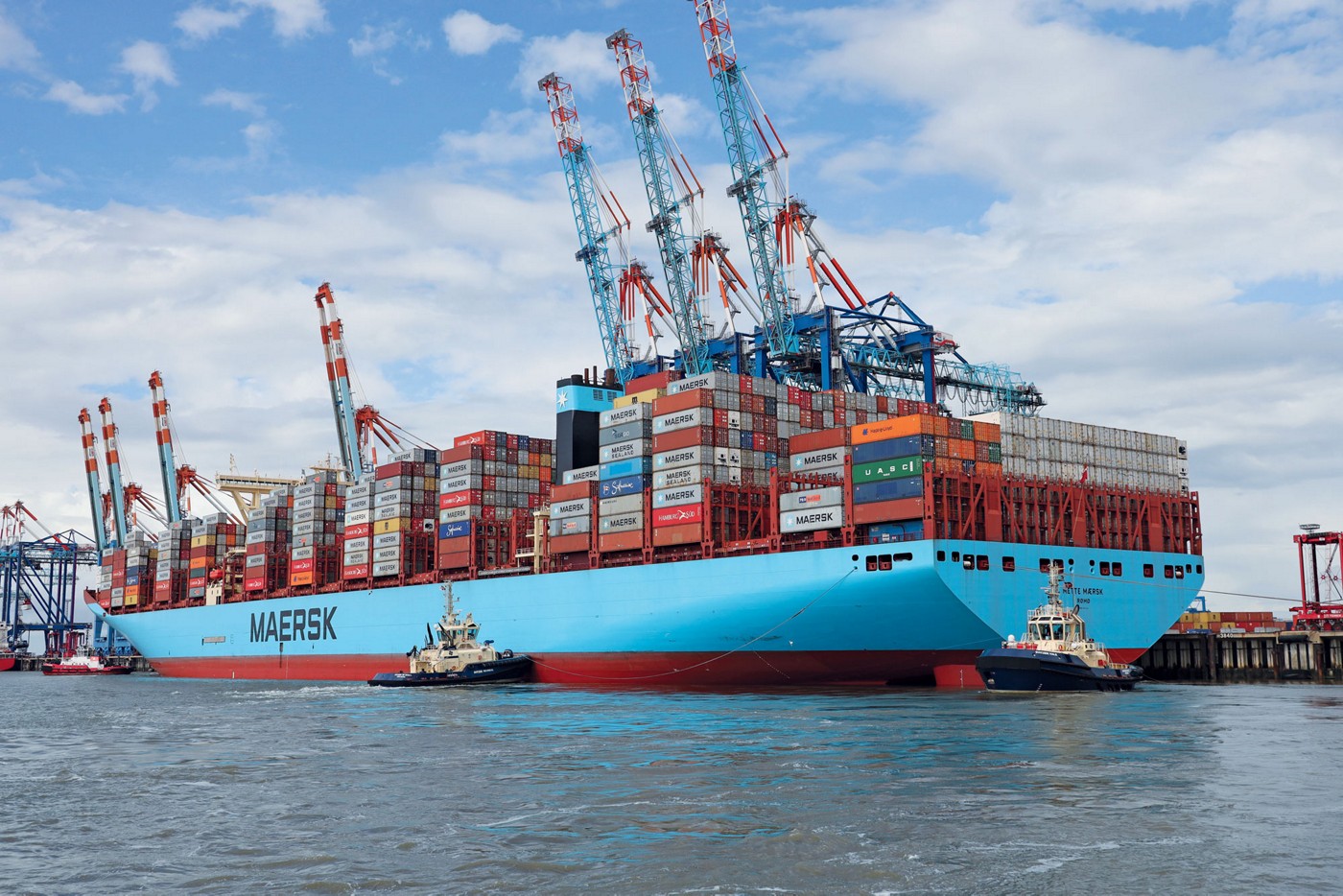
You could try any of the above strategies that you are sure will not affect your bottom line.
You could also think of alternative strategies like combining various shipping strategies to improve customer satisfaction and profits.
This kind of alternative strategy could lend itself to designing new promotions.
Here are a few:
- Offer standard and express shipping with assured delivery time at checkout so that customers requiring fast delivery can opt for it.
- OfferfFree shipping is it drives customers to your site. At the time of checkout, ensure to offer express shipping at a higher rate for faster delivery.
- Offer Tracking services for shipments.
- Offer branded shipping.
Ensure the customer can track product shipments by providing a tracking service. Today, most eCommerce shipping solutions and 3PL offer tracking services that you could leverage.
Opt for Multiple Carriers
Opting to partner with multiple carriers to provide shipping for ecommerce has many benefits for online sellers. In addition to having the choice of the best services, it can also lead to lower costs.
Benefits:
- Retailers are not dependent on a single shipping company
- Firms can choose the shipping company with the best rates
- Firms can choose the shipping company with the fastest delivery options
- The order will always be delivered at the fastest rate and the cheapest price
- Retailers can choose different shipping companies, depending on the nature of the goods
What are the Benefits of eCommerce Shipping?
Automated shipping process
One can control the eCommerce shipping process with automated shipping. The system updates the inventory, the order tracking numbers, the courier reports, and the order delivery reports.
An automated eCommerce shipping system replaces all manual processes, thus reducing human error and streamlining the fulfillment operations.
An eCommerce shipping solution helps you import and export files, confirm/cancel orders, update inventory status, and choose the courier service.
Sales channels integration
Any eCommerce shipping solution will automatically sync the purchase orders with your sales to start further fulfillment operations. You can thus process the orders and provide the tracking details and status updates to your customers in real-time.
Save time and money
With an automated solution, you gain access to multiple channels and can offer faster deliveries at discounted eCommerce shipping rates enabling you to reach more customers.
Non-delivery reports
Orders not delivered and returned are a massive loss for any eCommerce business. Automated eCommerce shipping solutions can reduce this loss to a large extent. Reports detailing the delivered and undelivered orders are easily generated using automated solutions. You can even determine which courier/carrier partner was responsible for the delivered and undelivered packages and take action accordingly. At the end of each month, you may analyze which partner is diligent and saves money for you and which doesn’t.
Returns management
For an eCommerce seller, handling order returns is the most challenging. An automated eCommerce shipping solution will help manage your returns.
The system will effectively manage returns and make your customers’ shopping journey a wonderful experience.
Thus, an automated eCommerce shipping solution will help you with the following benefits.
- Quicker deliveries.
- Customer satisfaction, repeat purchase, and retention.
- Improved reputation and brand value.
- Higher sales and increased profits
- Save time and money
How to Choose an eCommerce Shipping Service for Your Business in 2025?
Small eCommerce business owners must partner with a suitable eCommerce shipping carrier to offer cost-effective shipping solutions to customers.
- When choosing an eCommerce shipping service that is right for your business, one must consider cost, shipping schedules, and type of packaging.
- Customers must be able to track their orders.
- Have a return service that is friendly and efficient
A 2018 research by Deloitte recorded that 72% of shoppers said that free shipping was the number one reason to shop online. Today, many customers expect free eCommerce shipping for their online purchases with a one or two-day delivery time.
Established companies could easily attain this goal, but this would be an enormous undertaking for small business owners.
Though small eCommerce businesses may find it impossible to offer this strategy, by accepting the challenge of providing free eCommerce shipping, they could gain a loyal and grateful customer who will come back to shop repeatedly.
eCommerce businesses must strive to review their shipping and fulfilment strategy and processes to succeed. However, the overall process becomes easier to manage once you partner with the right shipping partners.
Conclusion
eCommerce is growing at a rapid pace. eCommerce Shipping is a challenging activity for any business, let alone an eCommerce business. Every business must find the most appropriate shipping strategy to adopt. It’s not a one size fits all solution. Different companies have their challenges, and it will take time and continuous fine-tuning to arrive at the most optimum solution and strategy.
Evaluate your strategy periodically to ensure that you continue to deliver the best service, with the best customer experience, as an outcome at the lowest price possible. WareIQ can help fulfil all your eCommerce shipping requirements in addition to a host of other services.
WareIQ is an end-to-end solution for e-commerce fulfilment that allows you to ship 90% of your orders across India in 1 day – just like Amazon.
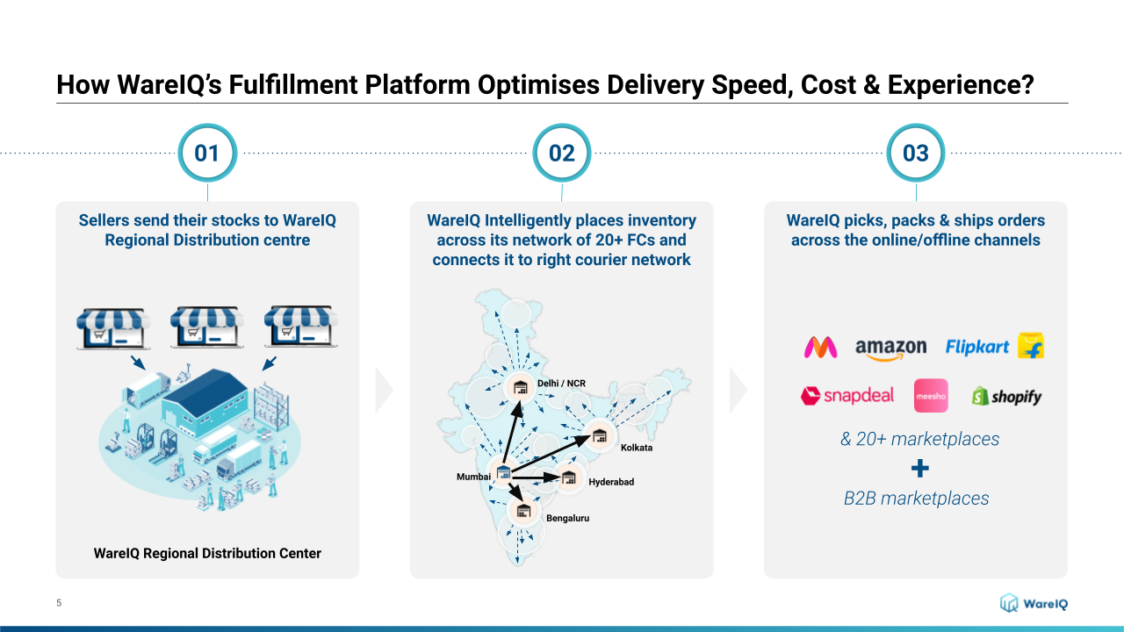
Customers don’t want to wait for orders to reach them within 5-15 working days, instead by default, they end up comparing all shipping options to Amazon and expect their orders to reach them within 2 working days. Evidently, e-commerce stores that don’t offer this will lose customers to Amazon. To survive and remain competitive e-commerce businesses have to ‘deliver’ on this expectation.
WareIQ’s technology prioritises speed and scale to give you complete control over your logistics and offer Amazon-like delivery to your customers. WareIQ unifies all your logistics operations into one platform so you can manage everything in one place – from inventory, orders, and warehousing, to shipping, delivery, and returns. No more wasted resources and fragmented data from a hundred different tools.
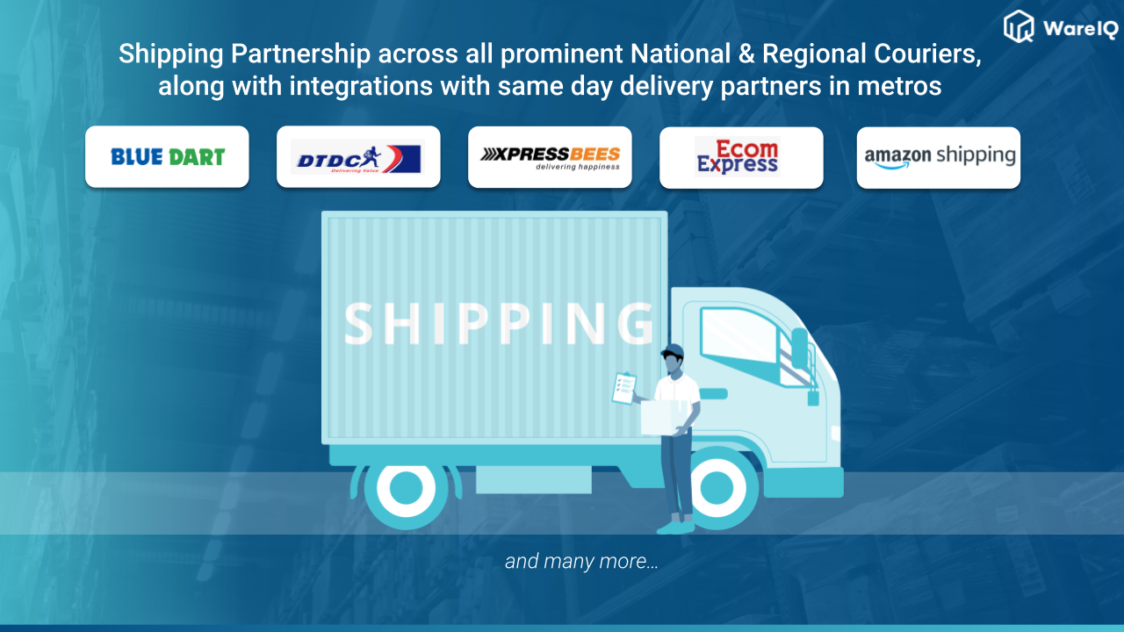
WareIQ has shipping partnerships with all the prominent national and hyperlocal eCommerce courier service providers to enable last-mile delivery services for all eCommerce players. Our clients have an option to choose from 20+ shipping companies to enable faster delivery in 1-2 days.
- Pan India Fulfillment & Darkstore Network: Plug-and-play fulfillment infrastructure with no minimums, which is compliant with Amazon Seller Flex, Flipkart Assured, Myntra and other marketplaces
- Inventory & Network Planning Excellence: Best-in-class AI models for sales forecasting, product segmentation, and inventory management to reduce inventory by 40% and increase revenue by 10%.
- Vertically Integrated Fulfillment Tech Stack: Our Fulfillment Tech Solution supports integrations with 20+ top marketplaces & D2C platforms, and prominent national, regional and hyperlocal couriers, enhancing reach by covering deliveries for 27,000+ pin codes
- Supply Chain Productivity Applications: Integrate a host of supply chain productivity apps with a single-click to your existing CRMs, ERPs & accounting software to manage your logistics workflows from one command center. Use Apps like RTO Shield to get 100% RTO protection, Branded Tracking to turn your order tracking page into a profitable marketing channel, and many more.
Trusted by 300+ top Indian brands, we are helping them accelerate online sales and expedite their growth through a synergistic combination of advanced technology, robust fulfillment infrastructure & seller enablement services!WareIQ is backed by leading global investors including Y Combinator, Funders Club, Flexport, Pioneer Fund, Soma Capital, and Emles Venture Partner.
Ecommerce Shipping FAQs (Frequently Asked Questions)
What are the most common eCommerce shipping options?
The most common eCommerce shipping options include standard shipping, expedited shipping, same-day delivery, local delivery, international shipping, and in-store pickup. Each option varies in speed, cost, and availability depending on the seller’s logistics setup and the buyer’s location.
What is eCommerce shipping?
Transportation of all the products and services purchased online from a retailer to a customer’s delivery destination is referred to as eCommerce shipping.
How do I choose an e-commerce shipping service for my business?
Factors you should consider while choosing a shipping service for business are:
Shipping destination: Consider the countries or regions you want to ship to and select a shipping service that offers coverage in those areas.
Delivery speed: Determine the delivery speed requirements for your products and choose a shipping service that offers the necessary options.
Shipping cost: Compare shipping rates of different services and choose the one that offers the most cost-effective options for your business.
Package size and weight: Consider the size and weight of the products you will be shipping and choose a shipping service that can handle your needs.
Carrier reputation: Research the reputation of different shipping carriers and choose one with a track record of reliability and good customer service.
Integration with your e-commerce platform: Choose a shipping service that integrates well with your e-commerce platform to make shipping and tracking as efficient as possible.
Customer service: Consider the level of customer support offered by the shipping service, including response time and availability
What are the top shipping solutions for eCommerce?
WareIQ
ShipperHQ
ShipStation
AfterShip
ShippingEasy
How is eCommerce shipping & delivery cost calculated?
To calculate a shipping cost, simply weigh the product and use a shipping cost calculator. If your package is small yet heavy, ask for a shipping cost based on dimensional volume, which may be less expensive. When calculating postage by weight, remember to use the entire weight of the package rather than the product’s weight.
How can I reduce eCommerce shipping costs?
• Try to Reduce the weight of packages
• Opt for right-sized packaging
• Whenever possible choose flat-rate shipping
• Keep monitoring rate changes
• Use WareIQ shipping to cut costs
Read about more ways to decrease shipping costs in detail.
How does WareIQ help in shipping for eCommerce?
WareIQ provides end to end fulfillment services to eCommerce companies. WareIQ gives an option to the eCommerce & D2C brands to select from the best courier/shipping partners to optimize eCommerce shipping & logistics. Apart from that, eCommerce companies can do the following:
Track shipments in real time
Collaborate at shipping level with your courier partner
Predict anomalies
Catch delivery failures
Overcome escalations
How can you distinguish your brand through your shipping strategy?
By offering good branding and a positive customer experience and this is what you can do:
Offer fast and reliable shipping: Offer multiple shipping options with delivery speeds that meet or exceed customer expectations. This can help set your brand apart and build customer loyalty.
Provide excellent customer service: Offer exceptional customer service, including easy-to-use tracking, prompt response to customer inquiries, and a streamlined returns process.
Personalize packaging: Use custom packaging that reflects your brand, including branded boxes, custom tissue paper, or branded shipping labels.
Offer free shipping: Consider offering free shipping for orders above a certain value. This can be an effective way to differentiate your brand and attract customers.
Add a personal touch: Include a personalized note or small gift with each order. This can help build a connection with customers and set your brand apart.
Offer eco-friendly shipping options: Offer eco-friendly shipping options, such as using biodegradable packaging materials or using shipping carriers that prioritize sustainable practices.
How to ship products to online customers?
You ship and deliver products to eCommerce in a few easy steps:
Calculates the shipping charges
Decide the courier company through which you will ship the order
Pack the package properly so that it doesn’t get damaged while transit
Get proper shipping labels so that right product reaches the right customer
Get the product shipped & dispatched through an eCommerce shipping company like WareIQ
Track the order till it reached the customer





